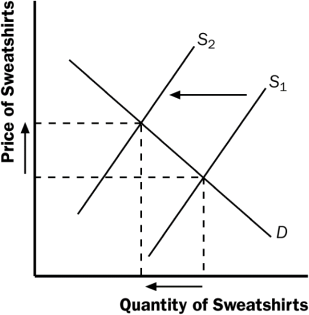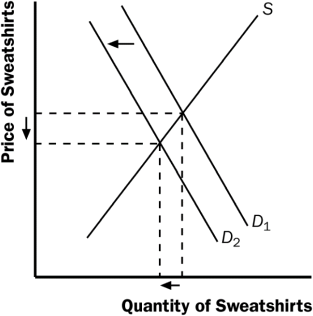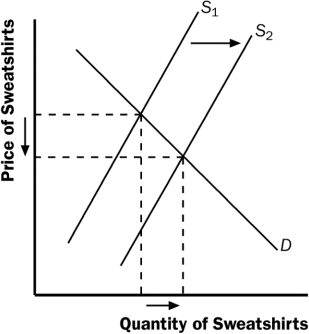FINN 1061 Introduction to Financial Economics WORKSHOP 1 2023-2024
Hello, dear friend, you can consult us at any time if you have any questions, add WeChat: daixieit
WORKSHOP 1
Introduction to Financial Economics (FINN 1061)
2023-2024
Question 1
Rival political groups argue about the value and effectiveness of speed cameras as a means of influencing driver behaviour and improving safety on the roads. An economist is asked to conduct research into the costs and benefits of speed cameras to help decision-making. What sort of factors will the economist have to take into consideration in such research, and what might be the challenges in identifying and quantifying the full range of costs and benefits?
Solution 1
It costs money to place speed cameras on the side of roads and this money has alternative uses. Therefore, policy makers want to be as sure as possible about the value and effectiveness to speed cameras. They will want to know the costs associated with putting in the cameras including the disruption to traffic that the instalments might produce and set these against the benefits such as lower speeds being adhered to and the number of accidents being reduced and the value of less accidents to the economy. Different types of accidents have different costs associated with them including loss of income and taxes from those involved in accidents, through to extra traffic congestion and a cost to the NHS and public services. They will also need to estimate the numbers caught by the cameras and the incomes from these. They will want to know the relationship between the level of the fine and the numbers caught. There will be challenges in placing values onto some of these and also to be confident that the predictions will be accurate.
Four key elements to the discussion:
- Trade-off (A result of scarcity)
- Direct costs of implementing such a plan
- Opportunity costs
- Efficient use of resources
Question 2
Consumers are now much more aware of ethical implications of their purchasing and consumption decisions. Questionable social or environment activities by firms and countries have also negatively influenced demand. Discuss and give examples to substantiate your answer.
Solution 2
During apartheid in South Africa consumers signal their opposition by boycotting South African goods- Demand curve for South African goods shifted to the left.
Vegans-promoting plant-based diets- Demand curve for plant-based food shift to the right.
Ethical consumer UK reported Amazon and Starbucks fail to adhere to standards i.e. tax avoidance- Demand curve for both firms shift to left.
ESGratings/ screenings require firms with commitments to invest in or avoid from investing in certain industries, sectors or economic regions/ countries. Child labour, inhumane working conditions, certain industries are considered as ethically compromised. Demand curve for such firms shift left.
Question 3
Using supply and demand diagrams, show the effect of the following events on the market for sweatshirts.
a. A drought in Egypt damages the cotton crop.
b. The price of leatherjackets falls.
c. New knitting machines are invented.
Solution 3
a. When a drought in Egypt damages the cotton crop, it raises input prices for producing sweatshirts. As a result, the supply of sweatshirts shifts to the left, as shown in Figure 1. The new equilibrium has a higher price and lower quantity of sweatshirts.
Figure 1

b. A decline in the price of leatherjackets leads more people to buy leatherjackets, reducing the demand for sweatshirts (on the assumption that sweatshirts and leather jackets are substitutes for one another). The result, shown in Figure 2, is a decline in both the equilibrium price and quantity of sweatshirts.
Figure 2

c. The invention of new knitting machines increases the supply of sweatshirts. As Figure 8 shows, the result is a reduction in the equilibrium price and an increase in the equilibrium quantity of sweatshirts.
Figure 3

Question 4
a. Are fresh squeezed juices substitutes or complements for cola?
b. Using a supply and demand diagram, show what happens in the markets for juices if the tax on cola is increased.
c. Studies indicate that the price elasticity of demand for cola is about 0.4. If a packet of cola is currently priced at £6 and the government wants to reduce sugar consumption by 20 percent, by how much should it increase the price through levying a tax?
Solution 4
a. Juices are substitutes for cola, since a higher price for cola would increase the demand for juices.
b. An increase in the taxon cola leads to increased demand for juices. The result, as shown in Figure 4 for juices, is arise in both the equilibrium price and quantity.
Figure 4

c. With aprice elasticity of demand of 0.4, reducing the quantity demanded of cola by 20 percent requires a 50 percent increase in price, since 20/50 = 0.4.
From this point forward, there are two alternative solution methods:
- We use the formula consistent with your other modules and the new price will be £6 x 1.5 (or 150%) = £9.
- The other solution method is the midpoint method and with the price of cola currently £6, this would require an increase in the price to £10 a pack using this method (note that (£10 - £6)/ £8 = 0.50).
Question 5
Market research has revealed the following information about the market for chocolate bars: Qd = 1,600 - 300P, and the supply schedule is Qs = 1,400 + 700P. Calculate the equilibrium price and quantity in the market for chocolate bars.
Solution 5
Equilibrium occurs where quantity demanded is equal to quantity supplied. Thus:
Qd = Qs
1,600 – 300P = 1,400 + 700P
200 = 1,000P P = £0.20
Qd = 1,600 – 300(0.20) = 1,600 – 60 = 1,540
Qs = 1,400 + 700(0.20) = 1,400 + 140 = 1,540.
The equilibrium price of a chocolate bar is 0.20 and the equilibrium quantity is 1,540 bars.
Question 6
Suppose that the price of tickets to seeyour local footballteam play at home is determined by market forces. Currently, the demand and supply schedules areas follows:
Price (£) Quantity demanded Quantity supplied
10 50,000 30,000
20 40,000 30,000
30 30,000 30,000
40 20,000 30,000
50 10,000 30,000
a. Draw the demand and supply curves. What is unusual about this supply curve? Why might this be true?
b. What are the equilibrium price and quantity of tickets?
Solution 6
As Figure 5 shows, the supply curve is vertical. The constant quantity supplied makes sense because the football stadium has a fixed number of seats no matter what the price. (We are considering the primary market in which the only supplier is the football club, not the secondary market for tickets in which ticket touts sell on tickets they have bought.)
Figure 5

Quantity supplied equals quantity demanded at a price of £30. The equilibrium quantity is 30,000 tickets.
Question 7
Consider the impact of adecrease in the price of good X on the demand for good X and goodY when X andY are substitutes.
a. Will the substitution effect be positive, negative or is it not possible to say? b. Will the income effect be positive, negative or is it not possible to say?
c. Will the totaleffect be positive, negative or is it not possible to say?
Solution 7
a. We know X andY are substitutes and the price of X has gone down, making X cheaper of the two. Considering we can now buy more of X with our given budget, our demand for X increases.
We are also told in the question that X and Y are substitutes. If the substitute becomes cheaper the other one becomes more expensive, and thus less desirable. This means our demand for Y will decrease.
Keeping these in mind, we can the substitution effect if (+) for X and (-) for Y (it is substituted more with cheaper X).
b. The decrease in price of X makes our consumable income more in real terms. In other words, if we continue consuming the same amounts of X andY there will still be some money left. Unless otherwise stated, we assume both are normal goods, meaning we would like to consume more of them to maximise out utility.
Because of that the income effect will be (+) for both X andY (We can increase the quantities of both).
c. The total effect will be the sums of substitution and income effects for both.
We now know both income and substitution effects are (+) for X, so the total effect will be (+) for X.
The total effect for Y depends on which of the (-) substitution effect or (+) income become more dominant. This can go either way, but we are told in the question that X andY are substitutes, so this means that the substitution effect is expected to be more dominant. Thus, the total effect will be (-).
The Mechanism for Income & Substitution Effects

Question 8
Please watch the video “Introducing ‘Doughnut’ Economics” and read the article “The Amsterdam City Doughnut” provided on this workshop section of the module page.
Can you think of some ways you can apply Doughnut Economics in the city where you live?
Solution 8
The doughnut economic theory is a visual framework for economic sustainable development. Throughout history politicians and economists have often focused on growing their economies as fast as possible, often by producing more goods and services without thinking of the social and environmental impacts of these policies. This has led to resource depletion, less biodiversity and increased carbon output. Doughnut economics, focuses on alternative social areas such as health of society, social equality and education and other key ecological issues such as climate change and air quality. This theory believes that the ‘traditional’ means of measuring a country prosperity such as growth need to be changed in the 21st century to achieve a sustainable prosperous future.
In your city, there can be emphasis on improving public transport links, this is because it will create the benefits of more efficient travel but also a decrease of carbon emissions in the inner-city area. This is important as studies a high volume of cars in a small urban area can lead to worse air quality and therefore health implications for its inhabitants. Alternatively, the city can increase electric charging ports installed around the city to encourage residents to invest in electric cars. This sustainable investment is essential to maintain the ecological ceiling of the donut.
Moreover, if the city is rapidly growing, a massive increase in housing and development might be required. However, in this case developers must create sustainable housing that is ‘environmentally friendly’. While this is more expensive it is investing in a more sustainable future where house will require less energy and have a lower carbon footprint. Some of the associated issue with this is that houses are more expensive to build meaning many consumers are forced further out of the city, thus it may create a social issue. Away to resolve this is through government subsidies for developers building affordable house sustainably, this would increase supply and lower costs.
There is also the issue of fairness: people who have already bought their own property may object to government intervention in the shortage, because it greatly reduces the appreciation of the property they buy. So, while promoting social inclusion is a key goal of doughnut economics, it can also raise issues of fairness and equity, as some groups may benefit more than others.
Finally, the city can announce subsidies or awards to businesses, community groups and individuals that are sustainable,in an effort to encourage people to make a conscious effort to create a better future.
Together, these approaches present enormous challenges that require careful consideration and planning to ensure their successful implementation. However, the benefits of promoting sustainable, inclusive and equitable economic development might make these challenges worth overcoming.
Question 9
Please watch the video “Starbucks enters Italy, but will Italians drink their coffee?” and “Why Starbucks failed in Australia?” and read the article “Can Starbucks succeed in Italy?” provided on this workshop section of the module page.
Share your thoughtshow Starbucks can reduce consumer price sensitivity in Milan?
Solution 9
There is no debate Starbucks is a corporate superpower in its homeland (United States of America) dominating the market as market leaders with over 37% market share. However, it tookover 30 years to truly establish the brand and influence consumer culture in the coffee market partly explaining the failure of the brand in Australia.
In 2000, Starbucks opened their first franchise in Australia embracing its western coffee culture to the Australian population. Unfortunately, insufficient research by the coffee giants meant troubled times would lay ahead. The Australian Coffee market is highly saturated, worth $3bn as of 2000 with large number of competitors making for a price elastic market. This is important because Starbucks consider their products luxury therefore justifying the premium prices they charged. However, Starbucks failed to adapt the local simplistic coffee culture in Australia since consumers were not enticed by the “sugary,” over the top drinks Starbucks had to offer. Furthermore, the rapid expansion of Starbucks opening 87 stores in 7 years alienated consumers since the product became “too convenient” undifferentiating itself from the competition. Finally, the 2008 financial crisis posed the final straw for Starbucks Australia resulting in the closure of 61 stores and reporting losses of $105min its first 7 years. This is because Starbucks products have a strong positive income elasticity of demand therefore a fall in consumer income lead to a more proportionate fallin demand. I can support this because Starbucks also closed 600 of its franchises in the US within the same year.
Italy has proven to be the Coffee capital of the world having opened the first ever coffee shop in the early 18th century In Venice therefore its incredibly difficult to influence such a prestige, rigid culture. In order for Starbucks to reduce price sensitivity in Milan, we can recommend the firm conduct market research in order to identify the tastes and preferences of Italian consumers. This is because Italian customer have described Starbucks coffee as “rigorously foamy” stating they will “absolutely stick to Italian coffee.” This is important because if Starbucks are able to adjust the blend of their coffee to suit local preferences whilst maintaining the same quality of its products, Starbucks will differentiate the brand from competitors therefore reducing its price elasticity of demand. As a result, Italian consumer will be willing to pay the premium prices for the premium, price inelastic products Starbucks has to offer.
To quote the article ‘Can Starbucks succeed in Italy’, ‘An espresso costs, on average, just under one euro (77p), with no extra charge for a macchiato. A cappuccino costs about one euro and 30 cents (£1).’, this is important to consider as Starbucks coffees are transitionally well above this price point therefore Starbucks needs to offer more than just the drink. Starbucks needs to target the audience correctly to break down the price sensitivity. After looking at how they went wrong in Australia they need to approach the Italian coffee culture correctly rather than just using the strategy they use in the US. However, both the articles and video express some of the benefits of using Starbucks for other reasons than just the coffee. This is because Starbucks offers a different experience to the traditional Italian coffees, as consumers are able to stay in the cafes and drink their coffees, rather than going in for a shot of expresso. Another way Starbucks may have to adapt from their traditional way of operating is to create a more personalised experience as this seems to be what is important to the Italians who know their barista well, however understandably this is going to be difficult with such a large café with many different employees on different shifts.
Starbucks is always going to be successful with tourists who will pay for familiarity of the brand, however they need to target the young local population who will like aspects of Starbucks such as the free Wi-Fi. If Starbucks can show the Italian customer base that they can create a coffee experience that gives them choice of their traditional coffees as well as other products such choices of traditional Italian snacks by doing this they will integrate into the market with much more success. Their Milan store is described as being one of the most special branches with an in-house roastery. This shows the care and quality of product to consumers which will resonate well with the Italian customer base. Starbucks is arguably creating a unique experience by doing this meaning they are able to charge a higher price and still maintain high levels of demand.
While we can assume the main the demographic that Starbucks will appeal most to is the younger generation, the older generation could be appealed to if Starbucks set help aid schemes or gave donations to the local community. This is very important as traditionally Milan’s coffee shops are very community based and by giving back they may win support of many of the locals.
2024-02-24